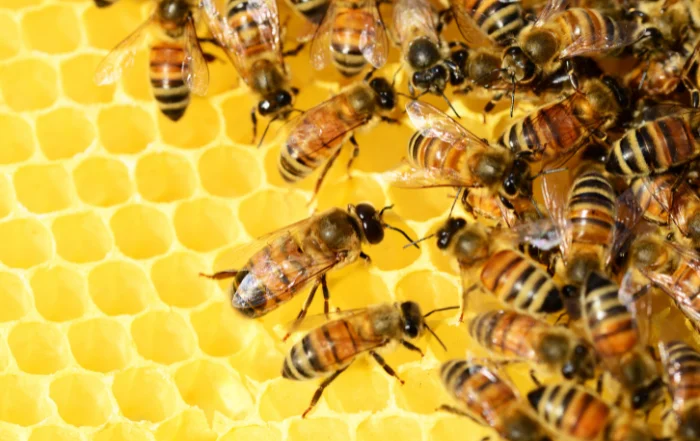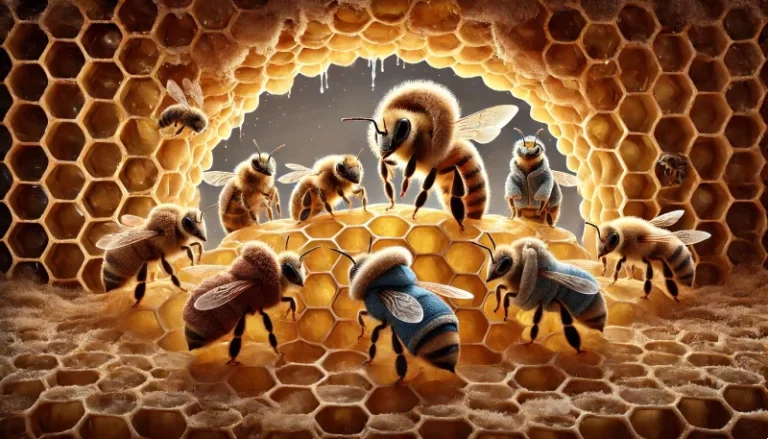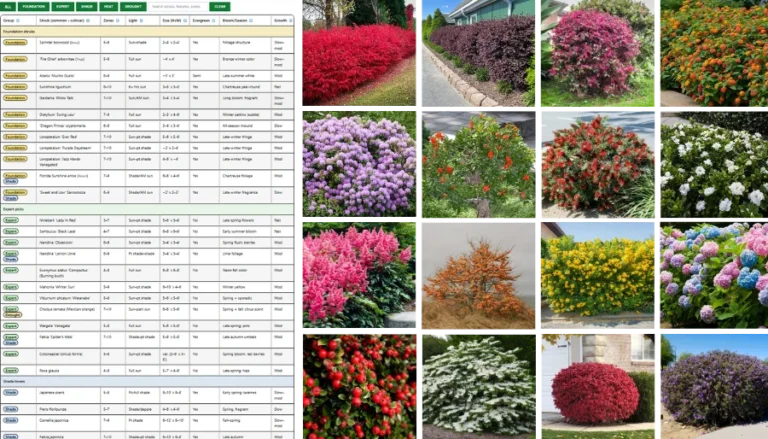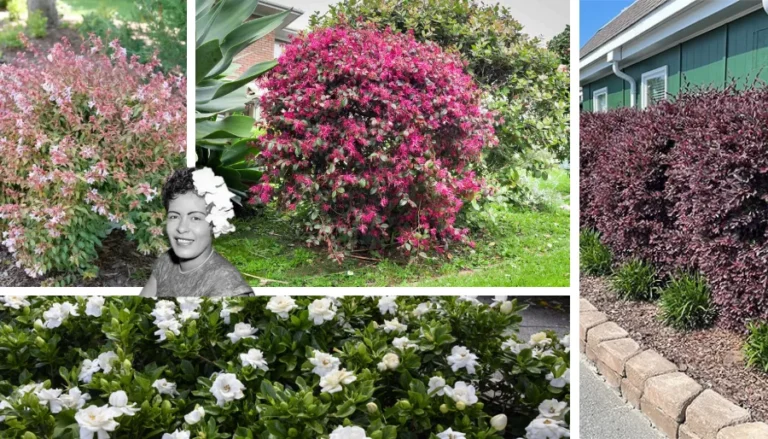Step into the enchanting world of beekeeping, and you’ll encounter a diverse array of hives, each with its own unique characteristics and historical significance.
From the familiar Langstroth hive to the traditional skep, each hive type offers a glimpse into the evolution of beekeeping practices.
In this article, we’ll embark on a captivating journey to explore the different types of bee hives, dive into their historical roots, and uncover which hives are most commonly used today. So, don your beekeeper’s veil, light your smoker, and let’s delve into the captivating story of bee hives.
Langstroth Hive: The Cornerstone of Modern Beekeeping
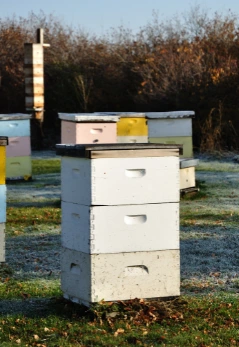
The Langstroth hive, invented by Reverend Lorenzo Lorraine Langstroth in the mid-19th century, revolutionized beekeeping practices. Langstroth observed that bees would leave a specific amount of space between frames, thus establishing the concept of “bee space.”
His hive design incorporated removable frames and standardized measurements, allowing beekeepers to easily manage colonies and harvest honey without destroying the comb.
Today, the Langstroth hive stands as the most commonly used hive worldwide, offering scalability, easy management, and compatibility with standard-sized frames.
Langstroth Hive Notes:
- Description: The Langstroth hive is the most common type used by beekeepers worldwide. It consists of stacked boxes with removable frames that allow bees to build comb and store honey.
- Features: Easy management, scalability, and compatibility with standard-sized frames.
- Cost Estimate: The cost of a Langstroth hive can range from $150 to $400, depending on factors such as the number of boxes, quality of materials, and included accessories.
Top-Bar Hive: Honoring Natural Beekeeping Practices
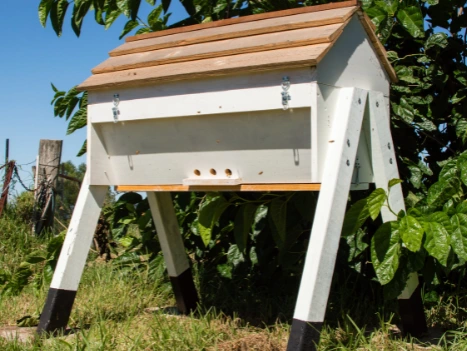
For beekeepers seeking a more hands-off approach and a hive that closely mimics the bees’ natural comb structure, the top-bar hive offers a compelling option. This hive type features horizontal bars instead of frames, allowing bees to build their own comb freely.
The top-bar hive honors the principles of natural beekeeping, focusing on minimal intervention and allowing bees to follow their instincts.
While it requires a different management approach than the Langstroth hive, top-bar hives are known for their simplicity, low maintenance, and suitability for beekeepers who prioritize a more naturalistic approach.
Top-Bar Hive Notes:
- Description: Top-bar hives have horizontal bars instead of frames, where bees build comb. They offer a more natural approach to beekeeping, resembling the bees’ natural comb structure.
- Features: Simple design, low maintenance, and suitable for beekeepers who prefer a hands-off approach.
- Cost Estimate: The cost of a top-bar hive typically ranges from $150 to $300, depending on the size, material quality, and additional features.
Warre Hive: Embracing Simplicity and Minimal Intervention

Emile Warre, a French beekeeper and priest, developed the Warre hive in the early 20th century. Inspired by the bees’ natural nesting habits, the Warre hive features stacked boxes with smaller dimensions.
Bees build comb from top to bottom, resembling the growth pattern observed in tree hollows. This hive design emphasizes minimal intervention, allowing bees to thrive with minimal disturbance.
The Warre hive is preferred by beekeepers who appreciate a hands-off approach, as it supports the bees’ natural tendencies and requires less manipulation.
Warre Hive Notes:
- Description: The Warre hive is designed to mimic the natural nesting habits of bees. It consists of stacked boxes with smaller dimensions, allowing bees to build comb from top to bottom.
- Features: Minimal intervention, suitable for those who prefer a low-disturbance approach, and can accommodate bees’ natural tendencies.
- Cost Estimate: The cost of a Warre hive generally ranges from $200 to $400, depending on the construction material and included accessories.
Flow Hive: Innovating Honey Harvesting
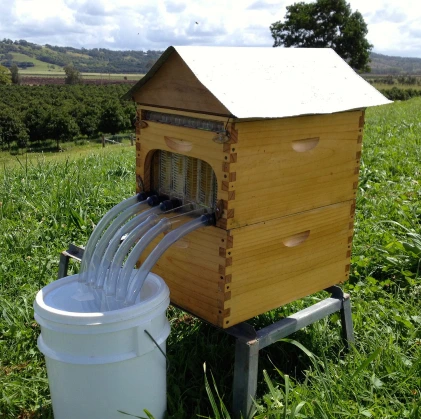
The Flow hive has captured the imagination of beekeepers worldwide with its revolutionary honey extraction system. Invented by Stuart and Cedar Anderson in 2015, the Flow hive features frames with preformed honeycomb cells that can be split open to release honey, eliminating the need for traditional honey extraction methods.
This innovation significantly reduces disturbance to the bees during harvest, making honey extraction more accessible and convenient for beekeepers. While relatively new to the beekeeping scene, the Flow hive has gained popularity for its user-friendly approach and simplified honey harvesting process.
Flow Hive Notes:
- Description: The Flow hive is a modern innovation that simplifies the honey harvesting process. It features frames with preformed honeycomb cells that can be split open to extract honey without disturbing the bees.
- Features: Convenient honey extraction, reduced disturbance to the bees during harvest.
- Cost Estimate: The cost of a Flow hive can range from $500 to $800, depending on the size, number of frames, and included accessories.
Skep Hive: A Glimpse into Beekeeping's Historical Roots

Before the advent of modern hive designs, beekeepers relied on the skep hive, a traditional dome-shaped structure crafted from straw or grass. Skeps have a long history, dating back centuries, and were commonly used for beekeeping until the introduction of standardized hive frames.
While skeps offer a rustic and traditional aesthetic, they often don’t meet modern beekeeping regulations due to challenges in inspecting and managing colonies. Nevertheless, skeps provide a fascinating glimpse into the historical roots of beekeeping and the resourcefulness of early beekeepers.
Skep Hive Notes:
- Description: Skep hives have a traditional dome-shaped design and were historically made from straw or grass. While less common today due to regulatory restrictions, they offer a glimpse into beekeeping’s historical roots.
- Features: Traditional aesthetics, but may not meet modern beekeeping regulations.
- Cost Estimate: The cost of a skep hive varies widely depending on the material and craftsmanship. Handcrafted straw skeps can cost around $100 to $200 or more.
Horizontal Hive: Combining Tradition and Practicality
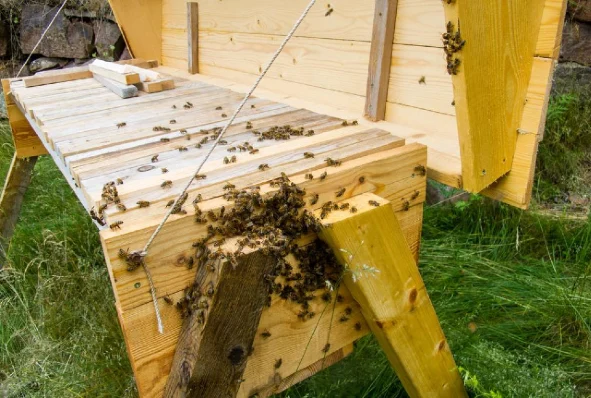
Horizontal hives, also known as long hives, take inspiration from both top-bar and Langstroth hives. These hives feature frames aligned horizontally, providing bees with a more natural comb-building environment.
Horizontal hives strike a balance between tradition and practicality, allowing for the natural growth of comb while also offering the convenience of easy inspection and management.
This hive type is particularly suitable for beekeepers seeking a hive design that supports natural bee behavior while still allowing for efficient hive manipulation.
Horizontal Hive Notes:
More To Discover
- The Health Benefits of Raising Heritage Turkeys in Your Backyard
- Why You Should Start Feeding Fermented Grains to Your Poultry: A Journey from Ancient Practices to Modern Farms
- Miniature Livestock Is The Perfect Livestock Choice For Small Hobby Farm Homesteaders
- How Cutting-Edge Robotics and Smart Hives Just Might Save Our Honeybees
- Description: Horizontal hives, also known as long hives, have frames aligned horizontally. They offer a combination of features from top-bar and Langstroth hives.
- Features: Natural comb building, flexibility in hive management, and suitability for beekeepers with physical limitations.
- Cost Estimate: The cost of a horizontal hive typically ranges from $200 to $400, depending on the size, material quality, and additional features.
As we conclude our journey through the world of bee hives, we’ve explored the Langstroth hive, the top-bar hive, the Warre hive, the Flow hive, the skep hive, and the horizontal hive. Each hive type carries its own unique history, design, and purpose, catering to the diverse needs and preferences of beekeepers around the world.
Whether you opt for the modern convenience of the Langstroth hive, the naturalistic approach of the top-bar or Warre hive, the innovation of the Flow hive, the traditional charm of the skep hive, or the hybrid appeal of the horizontal hive, each offers a gateway to the captivating world of beekeeping. Select the hive that resonates with your values, aligns with your management style, and celebrates the marvelous journey of beekeeping.
Embrace the legacy of beekeepers past, honor the wisdom of the bees, and embark on a fulfilling adventure in the realm of bee hives.







